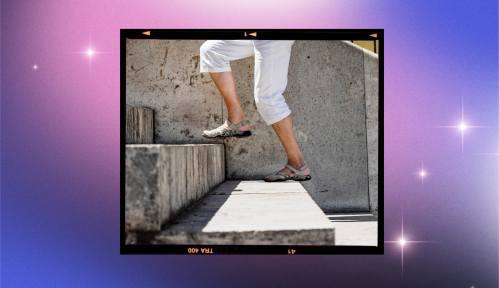Our editors independently select these products. Making a purchase through our links may earn Well+Good a commission
7 Dermatologists Share 7 Tips for Applying Sunscreen Correctly—Because We’re All Making the Same Mistakes
Learn how to apply sunscreen—with tips from seven dermatologists—as your best defense against skin cancer and premature signs of aging.

We’ve all reached for a bottle of sunscreen with the best of intentions. After all, sunscreen is your best defense against skin cancer and premature signs of aging. But incorrect application is all to common. Little mistakes can cause big problems, preventing you from getting the protection promised on the bottle. If you spend any time in the sun, it’s important to learn how to apply sunscreen the right way, to apply enough of it, and to apply it every day.
Experts in This Article
board-certified dermatologist and assistant clinical professor at Icahn School of Medicine at Mount Sinai
board-certified dermatologist based in New York City
board-certified dermatologist in New York City
board-certified dermatologist
board-certified dermatologist at Dermatology Physicians of Connecticut and associate clinical professor in dermatology at Yale School of Medicine
director of dermatologic surgery at Cedars-Sinai Medical Center
board-certified dermatologist specializing in medical and cosmetic dermatology
“The reality is that most of us aren’t applying enough sunscreen, and then most of us are not reapplying as often as we should,” says Ivy Lee, MD, a board-certified dermatologist in Pasadena, California. “If you aren’t using the right amount of product, you aren’t getting as much protection as you might think.”
When you use sunscreen incorrectly, you’re leaving yourself open to premature aging (wrinkles, sagging, and hyperpigmentation) or much worse, skin cancer.
“Skin cancer is the most common form of cancer, and it is something that is so easily prevented,” says Dr. Lee. “Current estimates are that one in five Americans will develop skin cancer in their lifetime, and nearly 20 Americans die from melanoma every day. Unprotected exposure to ultraviolet light from the sun is the most preventable risk factor for skin cancer, making it critical to protect your skin outdoors.”
Applying sunscreen correctly ensures you’re getting the best protection. Below, seven dermatologists share everything you need to know about how to apply sunscreen.
How to apply sunscreen correctly, according to dermatologists
1. Use a sunscreen that’s broad-spectrum and has an SPF of 30 or higher
First things first, you want to make sure the sunscreen you’re applying is a good one. Broad-spectrum means you’re getting protection from both UVB rays (the ones that cause redness and sunburns) and UVA rays (the ones that cause skin cancer, hyperpigmentation, and premature signs of aging). SPF stands for Sun Protection Factor and dermatologists recommend that you use sunscreen with a minimum of SPF 30. “SPF 30 offers sunscreen protection from 97 percent of UVB light, an SPF 50 offers sunscreen protection of 98 percent, and an SPF 100 protects against 99 percent,” says Debra Jaliman, MD, a board-certified dermatologist in New York City. So the higher an SPF you use, the better your protection. (Also, make sure it’s not expired.)
2. Start with dry skin
“If you put a mineral sunscreen on wet skin, it doesn’t go on,” says Shirley Chi, MD, a board-certified dermatologist in Southern California. And while chemical sunscreen may blend into wet skin, it’s not going to work as well. “The way chemical sunscreens work is that they actually interact with your stratum corneum, with the top layer of your epidermis, to absorb ultraviolet rays so that they don’t go into your skin and do damage. If you’re applying it to wet skin, then that’s going to affect the absorption of the chemical sunscreen.” Then, let the sunscreen dry before you put on any makeup.
So if you’re doing your morning skin-care routine, wait a few minutes between applying your last skin-care product and your SPF to ensure it’s going on dry skin. “Your skin-care routine should take several minutes,” says Dr. Chi. If you’re applying to your body, make sure it’s fully dry—so if you’re wet, towel off and then let it air dry.
This Parisian Skincare Brand Is Launching in the United States for the First Time—Here’s What a Derm Wants You to Know

We’re Calling It: Cleansing Balms Are the Face Wash of the Future—Here Are 3 to Add to Your Cart

This Is the One Product That Scarlett Johansson Always Keeps in Her Purse and on Her Bedside Table

3. Lay it on thick
“If you only apply half as much SPF 30 as you need, you’re really only getting SPF 15 protection,” says Dr. Lee. “To cover your body, use the amount of product you’d need to fill a shot glass, and for your face, make a peace sign and draw lines of product over two of your fingers.”
If you’re using a spray, “I always tell my patients to spray [one spot] for at least two seconds and then rub in with your hands,” says Mona Gohara, MD, a board-certified dermatologist in Hamden, Connecticut. “Don’t treat it like a perfume where you hope the droplets land correctly—actually rub in the spray.” For sticks, always apply sticks two times on the area being treated,” she adds.
4. Make sure to hit the most vulnerable spots
According to Elyse Love, MD, a board-certified dermatologist in New York City, your face, chest, back, shoulders, and the backs of your hands are the most prone to long-term sun damage. “This is because these are the areas of the body that are exposed to the sun almost year-round,” she says
5. Leave time after application and before you go into the sun
Sunscreen needs a bit of time to activate before it’s shielding your skin. So when you put on your sunscreen in the morning, wait at least 15 minutes before heading into the sun to ensure you’re protected.
6. Reapply, reapply, reapply
“Reapplication is recommended every two hours, or every 80 minutes if sweating or swimming, regardless of the SPF,” says Elizabeth Kream, MD, a board-certified dermatologist in New York City. “Even if you’re applying SPF 100, you must re-apply every two hours. This is simply because no matter how well a sunscreen is blocking the UV radiation, it wears off after a few hours.”
7. Slather it on every single day
When learning how to apply sunscreen, it’s important to remember that you should apply it every day, not just when you’re headed to the beach. The majority of sun exposure is casual and incidental, meaning you get it walking to the subway or to get lunch, or through your office window.
“Skin cancer prevention requires a comprehensive approach to protecting yourself against harmful UV radiation,” says Nima Gharavi, MD, the director of dermatologic surgery at Cedars-Sinai Medical Center. “The sun’s UV radiation reaches you even when you’re trying to avoid it—penetrating clouds and glass, and bouncing off snow, water, and sand.”
Here’s how to incorporate SPF into your makeup routine:
Sign Up for Our Daily Newsletter
Get all the latest in wellness, trends, food, fitness, beauty, and more delivered right to your inbox.
Got it, you've been added to our email list.







